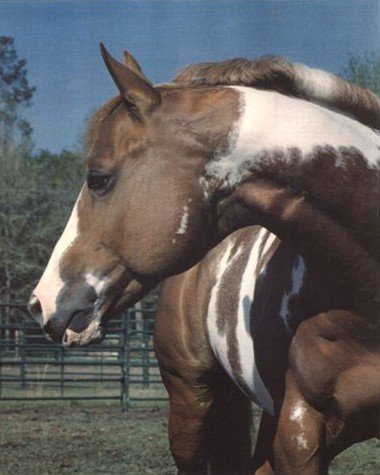The genetics of sabino horses







The pattern of sabino horses is polygenic - that is, controlled by more than one gene. Two major genes have been hypothesized to work together to account for the occurrence of both normal white markings and the markings of sabino horses (Gower, 1999). One should remember that although the scheme proposed by Jeanette Gower is perfectly plausible it may turn out to be a simplified version of reality.
The presence of any white (not just in sabino horses) is hypothesised to be recessive (NnNn), with the wild-type allele for no white being dominant (N+). The gene is also thought to show dominant epistasis over the alleles at the sabino gene. Thus any horse with the N+ allele is thought to be solid colored, without any white markings at all, regardless of its genotype at the sabino locus. Sabino itself is thought to be due to a dominant allele (SbS), with the wild-type (Sb+) allele being recessive. The table summarises the possible phenotypes due to the genotypes at these two loci.
If this scheme is right, and if the two genes are not genetically linked, we can make the interesting prediction that breeding together two heterozygous solid horses with no white markings gives a 3 in 16 (18.75%) chance of a sabino “crop-out” foal:
Gower, Jeanette. 2000. Horse Colour Explained. A breeders perspective. The Crowood Press. ISBN 1 86126 384 8.
Back to main page on sabino horses.
|
|
|||||||||||||||||||||||||||||||||||||||||







